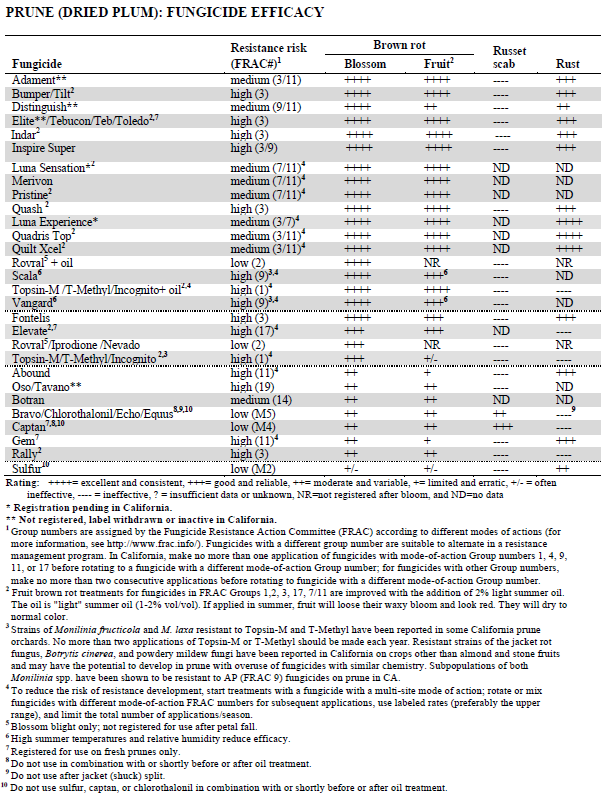Adapted from the articles “Managing fruit brown rot and prune rust” by Joe Connell, UC Farm Advisor, Butte County and “Managing fruit brown rot in prunes” by Franz Niederholzer, UC Farm Advisor, Sutter/Yuba Counties in the Sacramento Valley Prune News, July 2011 and July 2010, repectively
For fruit brown rot, management is based on prevention rather than control so it’s important to protect uninjured fruit before infections occur. Rotting ground fruit left from thinning can be a source of inoculum on ripening fruit, especially if hit by irrigation water. Removing or discing in thinned fruit helps reduce fruit brown rot. Injured fruit, fruit that touch each other, and trees with excessive nitrogen are the most susceptible to brown rot infections. Early harvest can help reduce brown rot damaged fruit at harvest, but may lower fruit “dry away”.
Conditions That Promote Fruit Brown Rot
- High nitrogen (N) levels. Avoid excess N fertilization.
- Clustered fruit. In heavy crop years, thinning can help reduce clustering.
- Fruit damage (split fruit, hail damage, and/or insect damage). Proper irrigation management and insect management is needed.
- Late harvest. Growers must balance the risk of the spread of brown rot infection with the economic benefit (lower dry away) of harvesting at lower fruit pressures.
- High disease pressure. By summer time, there is no way of economically reducing spore counts in a block. This should be done by mummy removal during the winter and properly timed fungicides at bloom. Even with a good bloom spray program, fruit rot infections can occur as fruit mature if rain or high humidity occur in the weeks before harvest. Fruit thinning followed by rain or irrigation can increase brown rot spore levels in an orchard.
If protection is needed, apply sprays within 4 weeks of harvest or just before predicted rain or high humidity as harvest approaches. Fungicides for brown rot control will not protect damaged fruit, and may not provide complete control under high disease pressure. If disease pressure is severe, an earlier spray can be applied between early June and mid-July. Information on how well different fungicides work is available in the table below.

From: Fungicides, Bactericides, and Biologicals for Deciduous Tree Fruit, Nut, Strawberry, and Vine Crops, 2015 by Drs. Jim Adaskaveg, Doug Gubler, and Themis Michailides, University of California.
Higher spray volumes (160 gpa) provide better fruit brown rot control than lower spray volumes (80 gpa). Including 1-2% 415 spray oil (1-2 gallons of oil per 100 gallons of water) in the tank with a fungicide improved fruit brown rot control. Oil removes a prune’s waxy bloom, but after drying, oil-treated prunes look the same as untreated fruit. Carefully read the fungicide label before applying and check with your packer to make sure the fungicide you choose is allowable for shipping.
Good spray coverage is essential for the best possible results. Proper nozzle arrangements and tractor speeds of 2 mph or less can make the difference between the best possible disease control and a waste of time and money.


Leave a Reply